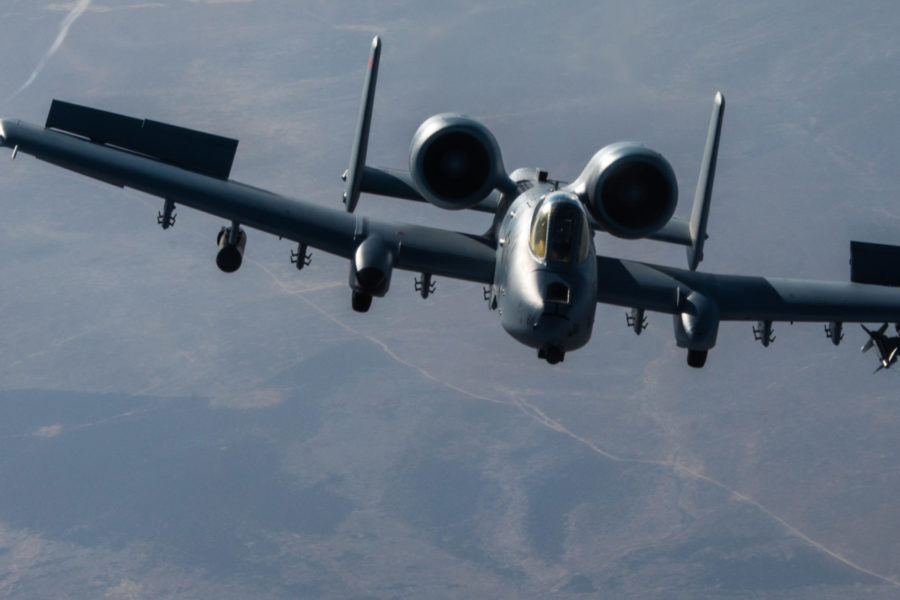Members of Congress took a big step toward granting Ukraine’s wish to defend its territory from Russia with American F-16s when the House passed an amendment to train Ukrainian pilots, but hurdles remain to overcome fears of escalation with Russia, Air Force veteran Rep. Chrissy Houlahan (D-Pa.) told Air Force Magazine.
“I understand the conversation,” Houlahan said by phone July 15, responding to concerns by the Biden administration that providing fighter aircraft could escalate tensions between the United States and Russia.
“But I frankly think that we need to be responsive to the request of the Ukrainian administration and [President Volodymyr] Zelenskyy, and if this is the thing that he and his country are asking for, then we need to be prepared to be able to provide it,” she said. “Some of the ways that we can be supportive might be with a variety of fighter aircraft and training.”
Rep. Adam Kinzinger (R-Ill.), an Illinois Air National Guard pilot, offered the amendment to the House version of the National Defense Authorization Act passed July 14. It would authorize $100 million to train Ukrainian pilots and maintainers on American fixed-wing aircraft for air-to-air and air-to-ground combat.
The amendment followed a June bill by Kinzinger and Houlahan that more narrowly called for the same amount of funds to train Ukrainian pilots on platforms such as the F-15, F-16, and Sidewinder missiles.
The Senate version of the NDAA does not have language to fund Ukrainian fighter pilot training, but a reconciliation bill could include the language for a full vote by Congress and the President’s signature.
“This is something that Kinzinger and I, and a variety of others, have been talking to the administration about in various places, either State or DOD or whatever, for about five or six months at this point,” Houlahan said. “This is something that is definitely a conversation that we need to continue to be having between now and when the Senate and House NDAA is reconciled and goes to Congress for approval.”
A staffer in Houlahan’s office told Air Force Magazine that each time the representative has communicated to the Biden administration the need for American combat aircraft and training for Ukraine, the administration has acknowledged the message but does not express clear support. Kinzinger’s office did not respond to requests to comment for this story.
Col. Yuri Ignat, chief spokesperson for the Ukrainian Air Force Command, told Air Force Magazine on July 13 that even before the Feb. 24 Russian invasion, the Ukrainian Air Force had identified the F-15 and F-16 as platforms it would like to transition to with capabilities far superior to the MiG-29s and Su-27s it now has in its fleet.
“The F-16 has been purposed to fight not only aerial targets but also ground targets, and in the U.S. Air Force, it also is tasked for the suppression of enemy air defenses,” Ignat explained by videoconference from Ukraine’s Air Force headquarters in Vinnytsia, Ukraine.
“Given our current situation, we also need a lot more air-to-ground capabilities,” he added. “This is why we’re in the process of thinking that maybe to win this war, we need some other fighters, not only F-16 but the F-15.”
Ignat said Ukraine seeks a lend/lease program or presidential drawdown authority transfer, whereby President Joe Biden transfers fighter jets from U.S. reserves to Ukraine. The U.S. Air Force is set to retire 48 F-16s this year, a pipeline that could outfit three to four Ukrainian fighter squadrons.
Defense Department spokesperson Lt. Col. Anton T. Semelroth told Air Force Magazine that the Biden administration has provided $8 billion in security assistance to Ukraine, including over 1,400 Stinger anti-aircraft systems, Phoenix Ghost and Puma unmanned aerial systems, and air surveillance radars.
On July 1, the administration announced two National Advanced Surface-to-Air Missile Systems to further strengthen air defenses, but a senior defense official told Air Force Magazine on July 8 that delivery of the systems was “several months” away.
“We have nothing new to announce on aviation capabilities at this time,” Semelroth said in a July 15 statement.
Ukraine has said it has more than 30 pilots with English-language skills ready to begin training without impacting its operations. Ignat estimates that his pilots could be trained to fly F-16s in six months.
Houlahan said a conversation about transferring fighter jets to Ukraine is not dissimilar to other Defense Department negotiations with partner nations that may later need to be backfilled.
“I’m not necessarily even saying frankly that this is F-16s,” Houlahan said. “The language of this particular part of the NDAA speaks to aircraft, and it could be something like A-10s, as an example, which are a resource of ours that we have been saying fairly consistently that we need less and less of.”
Houlahan said the legislation is written to give DOD the flexibility to meet Ukraine’s battlefield needs with retired American aircraft.
“I’m not trying to box us into a particular airframe or another. I’m trying to provide an opportunity for us to be able to transfer aircraft and the training that would be necessitated to be effective,” she said. “Nothing happens fast around here, so why not be prepared?”
